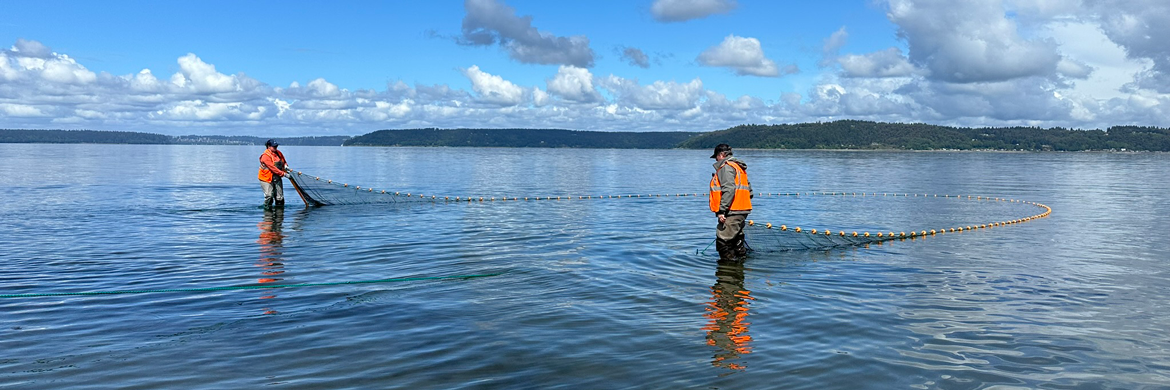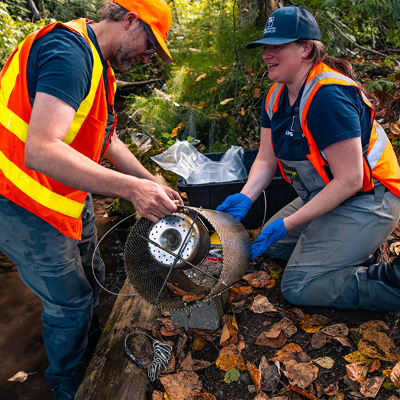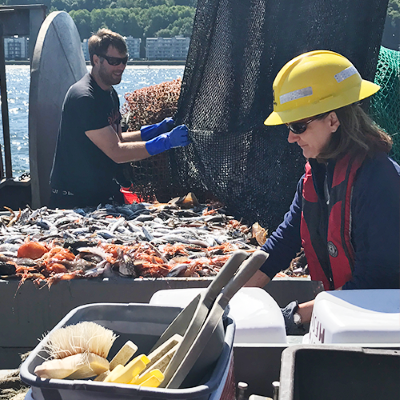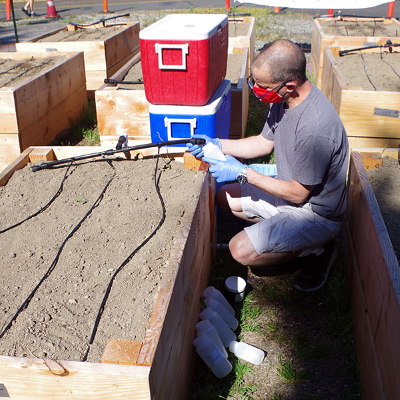Toxic chemical assessment

The Toxic Chemical Assessment (TCA) unit serves King County by tracking harmful contaminants in the environment, assessing their potential impacts on people and wildlife, and guiding efforts to support healthier communities and ecosystems. We provide scientific information to decision makers at King County and other jurisdictions to help reduce the human and ecological health impacts of toxic chemicals.
Understanding toxic chemicals
Human-made toxic chemicals (also called "contaminants") enter our environment in different ways from many different sources, including industry, agriculture, and household products.
Some of these chemicals have been present in the environment for decades because they do not break down easily. These are referred to as legacy chemicals and include contaminants like polychlorinated biphenyls (PCBs) and polybrominated diphenyl ethers (PBDEs). The toxicity of legacy chemicals is generally well understood, and their uses and acceptable levels in the environment are often regulated by federal and state governments.
However, industries are always creating new chemicals for use in commercial and consumer products. Many of these chemicals have undergone little to no testing to determine their impacts on people and the environment. Chemicals of emerging concern, or CECs, are pollutants that are recently detected in our environment and may have negative effects on people and aquatic life. CECs come from many sources including pharmaceuticals, common household products, vehicles, and agriculture. We focus our work on the CECs that pose the greatest health risks to people and aquatic life.
Why this work matters
Tracking legacy contaminants and contaminants of emerging concern is critical for protecting the health of people, wildlife, and the ecosystems where we live. Toxics monitoring and understanding toxic effects of chemicals and mitigation options are also key to understanding the effectiveness of the strategies King County uses to control chemical sources, treat discharges and clean up the environment.
What we do
- Conduct toxic chemical monitoring in the environment, including studies that evaluate risks to aquatic life
- Characterize the extent, transport pathways, and severity of environmental contamination across King County
- Design and lead studies testing the effectiveness of stormwater treatment options
- Develop new tools for long-range planning to manage current and future toxic chemical risks
- Assist land acquisition agents, engineers, regulators, and our legal team in understanding past contamination at properties we want to purchase and restore for salmon habitat, floodplain protection, and/or open space creation
- Conduct studies of sources to our wastewater system that support discharge permit compliance

Contaminants we regularly monitor
Get information about contaminants we monitor, including sources, trends over time, and how we're taking action.

Long-term aquatic monitoring programs
Learn how we investigate and document contaminants in freshwater and marine aquatic animals.

Past projects
Explore projects about toxic chemical assessment in King County, including topics like PCB's, water quality, source tracing, and more.
 Translate
Translate